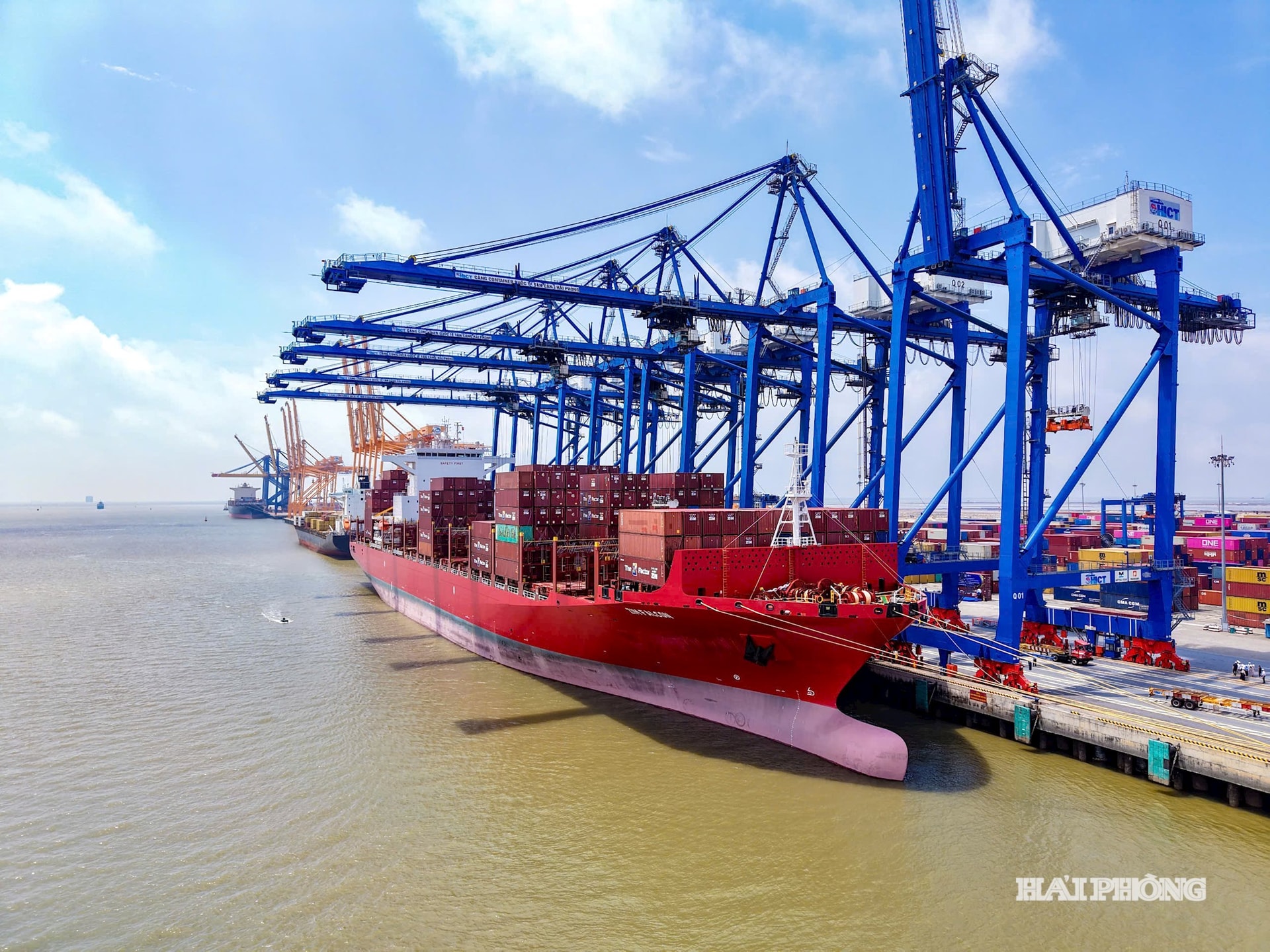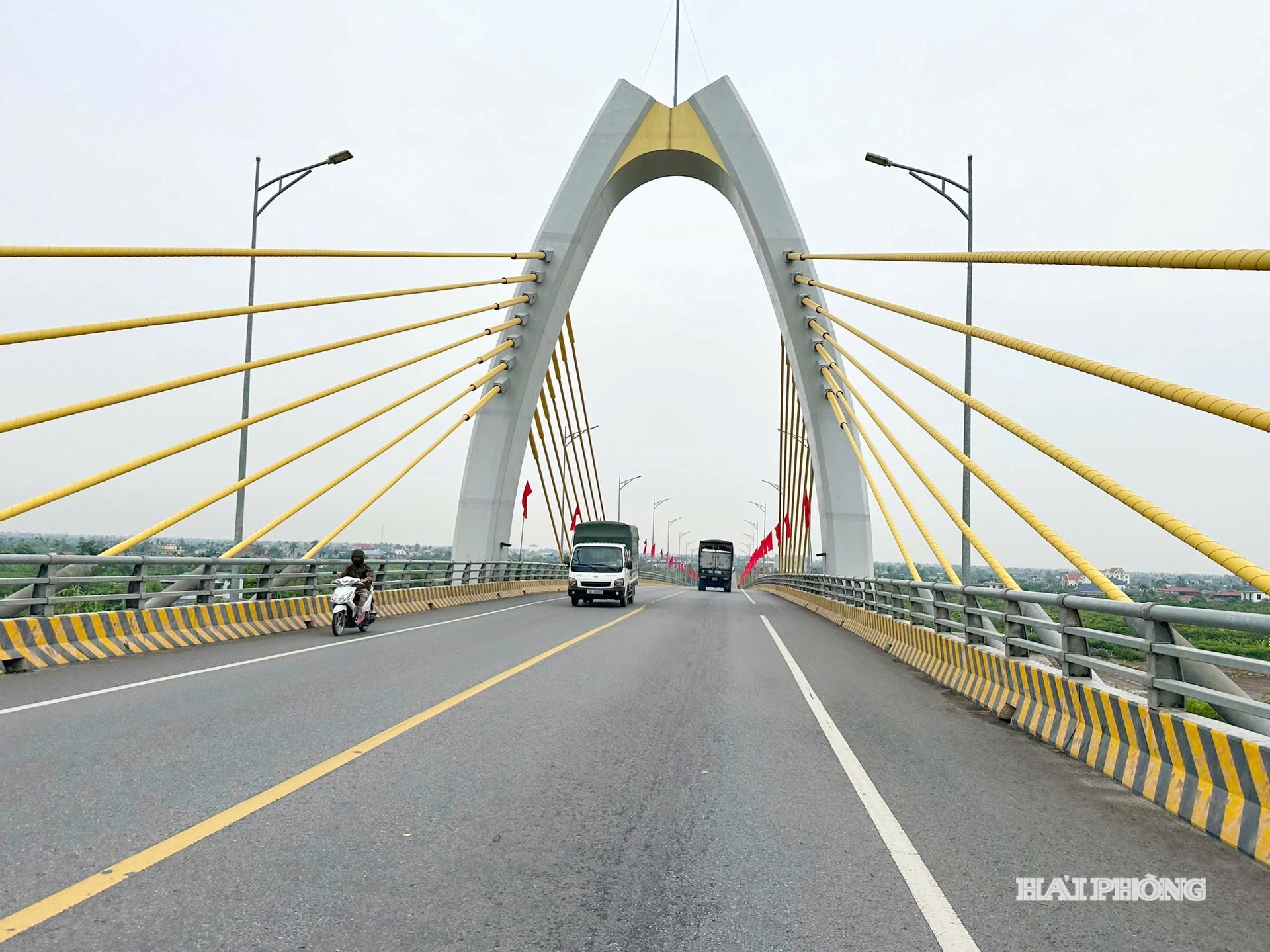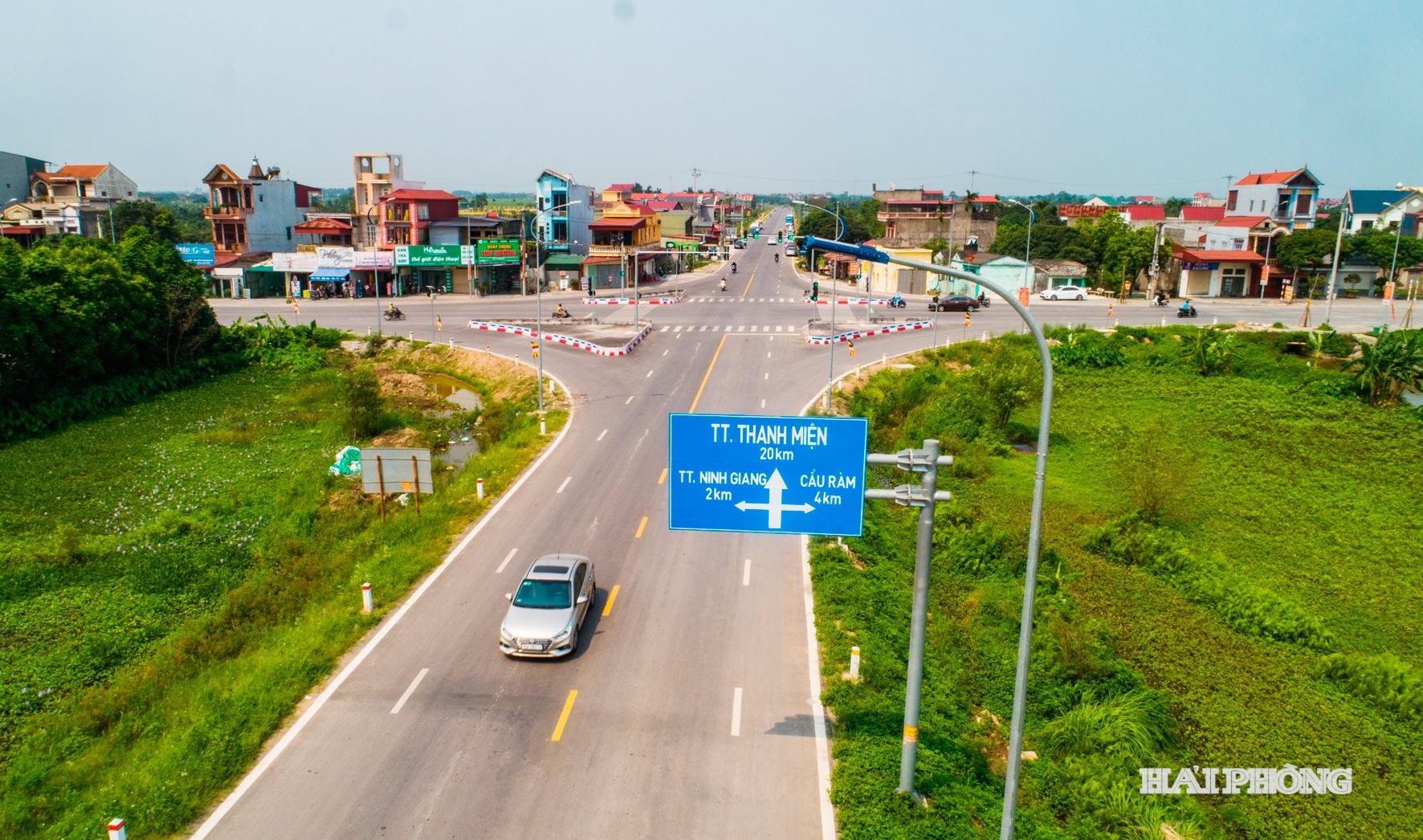Transport infrastructure – the ‘lifeline’ driving Hai Phong’s growth
Hai Phong city is gradually building a modern, synchronized transport infrastructure system with smooth connectivity to the rest of the country and the world, covering all five modes of transport.

Mobilizing major resources for comprehensive investment
Amid the historic autumn atmosphere, Hai Phong has solemnly launched and inaugurated nine major projects, reflecting the city’s determination and aspiration for strong growth in a new era. Of these, six transport projects reaffirm the city’s consistent priority: investment in modern and synchronized transport infrastructure to expand development space and drive growth.
Following this policy, in the past five years, both the former Hai Phong city and the former Hai Duong province highly concentrated resources on transport infrastructure development in a comprehensive, modern direction.
Accordingly, the former Hai Duong province planned six north-south axes, nine east-west axes, and two belt roads around the former Hai Duong city.
The province concentrated resources on 57 key transport projects totaling about 285 km with an investment of nearly 30 trillion VND. Of these, 15 projects have been completed and put into operation, 16 are under construction, and 26 are in the investment preparation stage.
The former Hai Phong city, meanwhile, focused on upgrading road infrastructure to strengthen regional connections, seaports, waterways, and air transport, particularly Lach Huyen Port and Cat Bi International Airport.

In 2025 alone, four new berths were inaugurated, bringing the total to six deep-water berths at Lach Huyen. This positions Hai Phong more prominently on the global shipping map, as large vessels can travel directly between Hai Phong and markets in the US and Europe.
Shortly after the merger with Hai Duong, the new Hai Phong city swiftly planned investment in a high-speed east-west expressway to link the two former urban centers of Hai Duong and Hai Phong. The city also allocated nearly 11 trillion VND from its own budget to co-finance the Lao Cai–Ha Noi–Hai Phong railway project through Hai Phong, in coordination with ministries and Central bodies.
Development in modern, smart direction
At the ceremony announcing the National Assembly’s resolution on the Hai Phong–Hai Duong merger, Prime Minister Pham Minh Chinh emphasized that Hai Phong must “think big, act decisively” to become a leading logistics and modern industrial hub, with strategic, synchronized, and smart infrastructure.
This direction sets the course for Hai Phong’s new development phase, where transport continues to serve as the “lifeline” of economic growth, urban expansion, and enhanced competitiveness.

The draft Political Report for the Hai Phong Party Congress for the 2025–2030 term outlines transport infrastructure development as a key task, tied to stronger regional connectivity.
Accordingly, Hai Phong will gradually build a synchronized, modern transport infrastructure system with smooth connectivity to the rest of the country and the world, covering all five modes of transport, covering all five transport modes: road, rail, sea, inland waterway, and air under a multimodal model.
For maritime transport, the city will accelerate completion of the remaining berths at Lach Huyen International Gateway Port, as well as develop the Nam Do Son seaport and Van Uc river port.
In the railway sector, Hai Phong is concentrating resources on the Lao Cai - Ha Noi - Hai Phong line to for direct connection to its seaports; coordinating the implementation of the Yen Vien - Pha Lai - Ha Long - Cai Lan project; and upgrading the Kep - Ha Long line located along the industrial park development corridor, thereby maximizing the advantages of railway connectivity among provinces and cities on the Vietnam - China economic corridor.
In aviation, Hai Phong is expediting the construction of Terminal 2 and a cargo terminal and the expansion of aprons at Cat Bi International Airport, while also studying plans for a new international airport in the southern coastal economic zone to serve long-term development.
With high political determination, long-term vision, and combined strength following the merger, Hai Phong is entering a breakthrough stage of development. The city aims to become Vietnam’s national maritime economic hub and a leading Southeast Asian logistics and seaport service center, with modern transport, seaport, airport, and urban infrastructure, by 2030.
HA NGA
